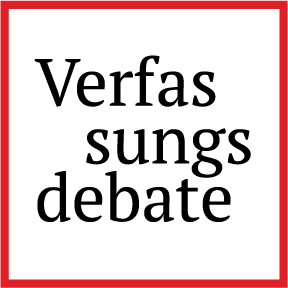Untying Ulysses From The Mast
(Why) Does Poland Need A (New) Constitution?
The first months of the new President of the Republic of Poland’s term leave little room for doubt. Karol Nawrocki is not only planning to initiate the adoption of a new constitution by 2030 – he is already changing the current one, adopted in 1997. In light of this political declaration, one might ask: Why does Poland need a new constitution? But the question doesn’t end there. Regarding President Nawrocki’s proposed constitutional changes we must also ask: What kind of constitution does he have in mind, and what does he seek to achieve through the adoption of a new one?
The populist constitution and its change
The “civic” candidate Karol Nawrocki, who unexpectedly defeated the frontrunner in the presidential race, Rafał Trzaskowski, by a margin of 369,591 votes, assumed office with a clear declaration: a new constitution is to be adopted by 2030. Although Nawrocki did not explain this decision, it likely reflects an intention to strengthen the powers of the President in relation to the government and to restructure the judiciary in order to resolve the ongoing crisis of judicial independence (explained here, here and here). At the same time, such a declaration may hint at something deeper, reflecting the distinctive way in which populist politicians perceive the constitution and its functions.
The long-standing interpretation of the current Constitution of 2 April 1997 was founded on core liberal democratic ideas – particularly pluralism of values, a broad catalogue of individual rights and freedom, and limited government. Under this constitutional framework, the President is directly elected and entrusted with significant powers, such as the right to initiate legislation, veto laws, and exercise various prerogatives. However, as part of the dual executive, the President’s position is not autonomous but closely tied to that of the government. This interdependence is especially evident in matters of foreign and European policy, such as the appointment and dismissal of ambassadors or participation in European Council or other meetings of European leaders – areas in which the President must act in coordination with the government, in accordance with the constitutional principle of cooperation between branches of power. 1)
The liberal understanding of the constitution has traditionally emphasized its legal function – that is, its role as the supreme source of law, a view reinforced over time by legal doctrine and the case law of the Constitutional Tribunal. This interpretation, however, was disrupted with the rise of a populist approach, particularly marked by the capture of the Constitutional Tribunal in 2015 and its aftermath. Populist actors emphasize the constitution’s direct link with “the people,” framing it primarily as an expression of the popular will. This marks a shift away from legal constitutionalism, or even political constitutionalism, toward a distinct form of populist constitutionalism. While political constitutionalism generally subordinates legal norms to democratic processes and political conventions, populist constitutionalism goes further: it is overtly political, subordinating legal norms to the perceived will of a particular segment of society (“the people”). This often comes at the expense of checks and balances, minority rights, and judicial independence as understood within the liberal constitutional tradition.
A defining feature of populist constitutionalism is the ultimate primacy of vox populi – the constructed voice of “the people” – over written law. Vox populi here refers not only to public awareness but to a will to act (or to fight), a readiness to exert pressure on the authorities, even to take to the streets if necessary. While vox populi may sometimes align with the well-established liberal interpretation of constitutional norms, it often does not. This explains the casual departures from constitutional principles hitherto accepted by a legal community, justified solely by what populist politicians claim to be “pressing social needs”.
There is a second characteristic feature of populist vision of constitutional law: agonismi, i.e. the acceptance of inevitable political conflict as a fundamental and ongoing condition of democracy. Populist leaders depend on such conflict, especially the tension between “the true people” and “the elite”, or between the competing visions of the common good.
The third defining feature of the populist approach is illiberalism, reflected in the rejection of the idea that the constitution should serve as a check on sovereign power. Populists do not see the written constitution as a legitimate constraint on the popular will; instead, they argue it should be interpreted in line with the current vox populi, which they believe must remain unrestricted. This challenges the traditional liberal view, exemplified by the allegory of Ulysses tied to the mast, where the constitution sets limits on state power and can only be changed through formal amendment procedures. Populists, by contrast, argue that a gap often exists between the written constitution and the people’s actual will – and that the latter should take precedence. In practice, the “popular will” is often constructed or mediated by populist leaders who claim to embody the true voice of the people. While populists recognize the people as the ultimate source of power, this power depends on their ability to assert their will effectively – through elections, protests, revolutions, or even opinion polls.
Such an approach has much in common with the European tradition of legal realism. It perceives the constitution a social fact entirely dependent on the voice of the people – of a particular social group (usually a majority, though not always) that is sufficiently powerful to exert real influence on the government. In this sense, the approach can be captured under the label of popurealism. Populist realist thought understands the constitution as a dynamic force, rather than a fixed, identitarian construct used to justify power.
Why change the constitution?
Why, then, President Nawrocki, seek to change the constitution, especially when his political formation conceptualizes it as a social fact – a reflection of “the people’s” current will, embodied not only in elected representatives but especially by the citizens in the streets?
A liberal constitution serves three core functions: to constitute, legitimize, and constrain. Populists largely disregard the constitutive and limiting roles, seeing the constitution as existing only “on paper” – a temporary snapshot of the people’s will that cannot truly limit their power. Instead, they focus on the legitimizing function, treating the constitution as a flexible social fact to be interpreted in politically convenient ways, provided it does not provoke major public backlash through elections or protests.
According to the popurealist view, the change itself matters less than the act of talking about change. Constitutional reform becomes a rhetorical tool – a means of shaping the vox populi not merely as political awareness, but as a mobilized will to defend specific values and visions, even to take to the streets. The core logic of popurealism lies in its ability to construct the people’s will through narrative rather than through substantive constitutional debate. Simply introducing the idea of constitutional change into the public sphere serves as a form of validation. Repetition – and, more often, multiplication – of such ideas on social media grants them visibility, traction, and, ultimately, a veneer of social legitimacy.
This is where President Karol Nawrocki’s proposal to amend or adopt a new constitution becomes particularly attractive. Simply discussing constitutional change can reshape perceptions of what “the people” want, given the constitution’s foundational status. In this way, populism manifests less through democratic processes or genuine deliberation, and more through narratives that “shape” the vox populi, thereby creating legitimacy for politicians’ actions. Nawrocki can then act in accordance with the narrative he sets.
New constitution for a new era
But perhaps Poland truly does need a new constitution. It could provide a way out of the institutional crisis triggered by the previous PiS governments, which captured key state bodies – often in open violation of the Constitution. These include the Constitutional Tribunal, parts of the Supreme Court, the National Council of the Judiciary (KRS), and the National Broadcasting Council (KRRiTV). In such a case, a new constitution would not so much “reset” these institutions as re-establish them.
More importantly, however, the country faces a challenging geopolitical moment, and perhaps what Poland really needs is a constitutional framework better suited to strong political leadership. Given the mounting external threats – including the ongoing hybrid war between NATO and Russia – should we not consider expanding presidential powers in areas such as foreign policy, national defense, and internal security, particularly concerning public order? Perhaps this is precisely what the public expected when it elected a President known more for his fighting spirit than for diplomatic finesse or elite academic credentials.
The 1997 Constitution established a model of presidential powers that blends elements of French-style semi-presidentialism with features of the German-style chancellor system. This carefully balanced dual executive system is designed to prevent excessive concentration of power. However, some constitutional scholars warn that if President Nawrocki and his political advisors continue efforts to consolidate power within the Presidential Palace, Poland may face yet another protracted constitutional crisis – this time within the dual executive – threatening the stability of the political system. A system built on a delicate balance between the President and the government cannot withstand sustained, informal attempts to rewrite the rules of the game. Like Wałęsa, President Nawrocki appears drawn to the idea of being more than an arbiter. 2) For now, President Nawrocki seems guided by a principle from the laws of material resistance: ut tensio, sic vis – “where there is tension, there is force.” 3)
A new constitution could simply resolve this tension by opting for a French-style model of semi-presidentialism, which would allow the President to directly control the government. Alternatively, adopting a German-style chancellor system might appear advantageous if PiS were to win the next elections. Yet behind the formal change lies a deeper temptation: to untie Ulysses from the mast. Unlike in the Greek myth, however, cutting the ropes would not merely free the People to be seduced by sirens – or perhaps, in today’s context, by Russian trolls. It would also allow the President to become the seducer, wielding unchecked power to shape and steer the popular will.
This post is the result of research project no. UMO-2021/41/B/HS5/01421 funded by the National Science Center in Poland.
References
| ↑1 | In a 2009 decision (Kpt 2/08) on a competence dispute over the President’s role in the European Council, the Constitutional Tribunal stressed that the President, the Council of Ministers, and the Prime Minister must act in line with the constitutional principle of cooperation between public authorities. More recently, in 2023, the President proposed a law on cooperation between state bodies during Poland’s EU Council Presidency, sparking controversy over its constitutionality and potential infringement on the government’s foreign policy powers. |
|---|---|
| ↑2 | As our distinguished colleague Ryszard Balicki recently observed on his FB profile: “Today, the situation is different. The 1997 Constitution leaves no doubt as to the dominant role of the Council of Ministers. The President’s actions no longer resemble a subtle legal chess match – they evoke the threat of a baseball bat.” |
| ↑3 | Hooke’s Law, named after the 17th-century English physicist Robert Hooke. |



